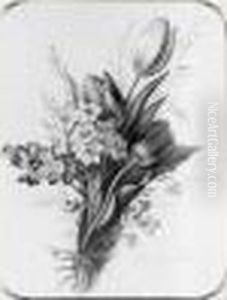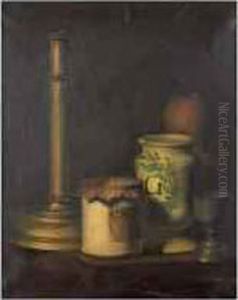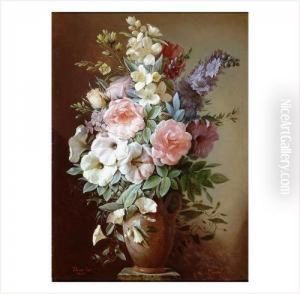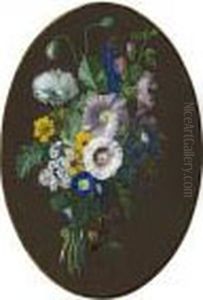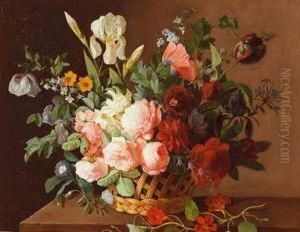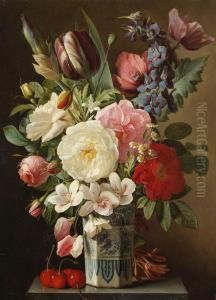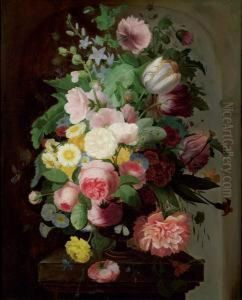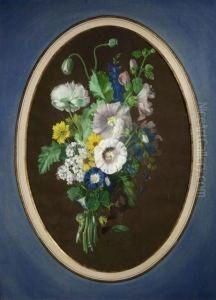Augustin Alexandre Thierriat Paintings
Augustin Alexandre Thierriat was a distinguished French painter, recognized for his contributions to the world of still-life painting, particularly in the realm of botanical and floral subjects. Born in 1789, amidst the tumultuous years leading up to the French Revolution, Thierriat's early life was set against a backdrop of significant social and political upheaval. However, it was the natural world, rather than the turbulent society around him, that captured Thierriat's artistic imagination.
Thierriat's journey as an artist began in the early 19th century, a period marked by a resurgence of interest in natural sciences, including botany. This cultural milieu greatly influenced his work, leading him to specialize in detailed and vivid depictions of plants and flowers. His paintings were celebrated for their precision and lifelike quality, attributes that reflected the artist's deep observation and appreciation of his subjects.
Throughout his career, Thierriat remained passionately devoted to his craft, contributing significantly to the genre of botanical illustration, a field that was becoming increasingly important for scientific study as well as for its aesthetic appeal. His works not only delighted art lovers but also served as valuable resources for botanists and horticulturists, bridging the gap between art and science in a way that was ahead of his time.
Despite his contributions, Thierriat's name is not as widely recognized today as some of his contemporaries. The reasons for this relative obscurity are varied, including the niche nature of his specialism and the shifting tastes in art that followed the Romantic and Impressionist movements. Nevertheless, among aficionados of botanical art and still life, his work retains a cherished place for its beauty and technical mastery.
Thierriat lived through a period of significant change, not just in France but across the world, witnessing the rise and fall of empires, revolutions, and the dawn of modernity. He passed away in 1870, leaving behind a legacy that, while niche, is an important testament to the intersection of art, science, and the natural world. His paintings continue to be studied and admired for their contribution to both the artistic and scientific communities, embodying a blend of meticulous detail and aesthetic elegance that remains impactful to this day.

